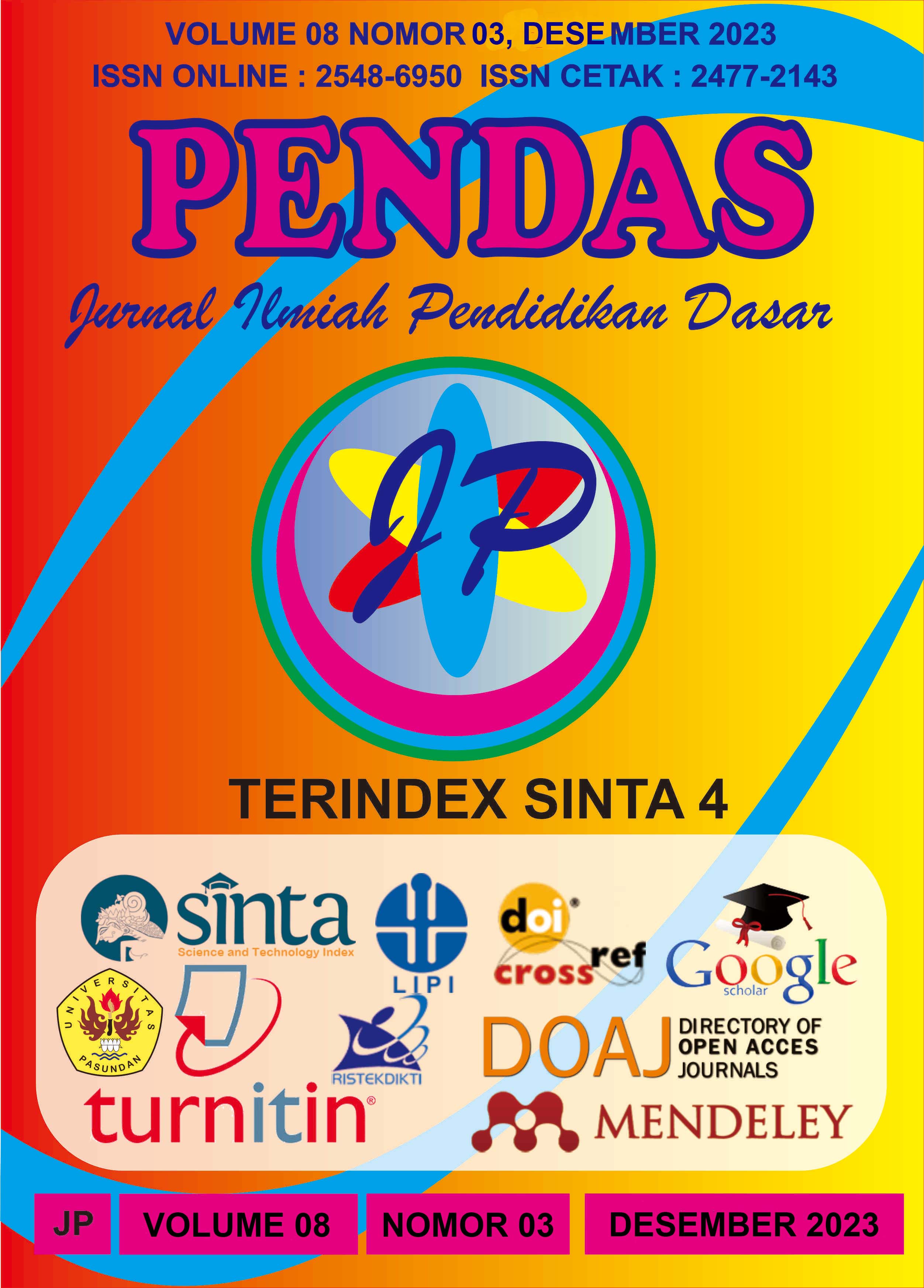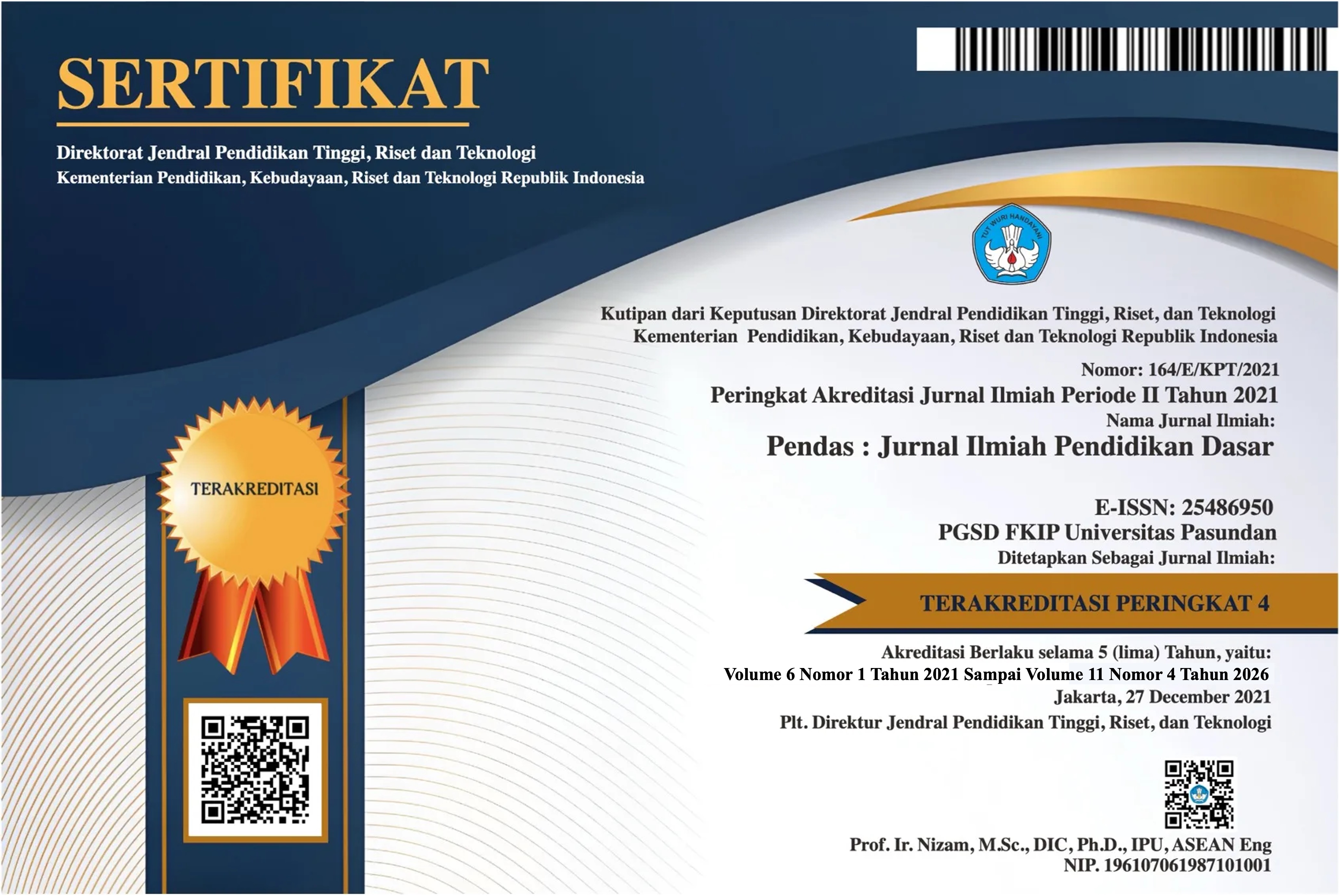PEMANFAATAN PANTAI MLARANGAN ASRI SEBAGAI SUMBER BELAJAR BAHASA INDONESIA KELAS IV PADA MATERI TEKS DESKRIPSI
DOI:
https://doi.org/10.23969/jp.v8i3.11074Keywords:
descriptive writing, environmental media, student learning, Bahasa Indonesia, fourth-grade studentsAbstract
This study was conducted in response to the observed difficulties that fourth-grade students at SD Negeri Mlarangan faced in writing descriptive texts in Bahasa Indonesia. The limitations in learning resources and the low intake of the students were identified as contributing factors to these challenges. The aim of the research was to explore the potential of using environmental media as a learning tool to improve students' descriptive writing skills. This research used descriptive research methods, with 26 fourth grade students as research subjects. The learning resources chosen were taken from the local environment, namely Mlarangan Asri Beach Pleret Panjatan Kulon Progo. Data collection methods included observation, in-depth interviews, and documentation, with data credibility assessed through triangulation. The results indicated that the use of environmental media significantly enhanced the students' ability to write descriptive texts, with 68.46% of students categorized as proficient in various writing indicators. The findings suggest that the utilization of the local environment as a learning resource has positive implications for student learning, including increased motivation, enhanced understanding of the subject matter, and a deeper connection to the surrounding environment. The study underscores the importance of integrating environmental media into language learning to facilitate meaningful and engaging learning experiences for students.Downloads
References
Arikunto, S. 2006. Prosedur Penelitian Suatu Pendekatan Praktik. Jakarta: Rineka Cipta.
Cahyani Ani. 2019. Pengembangan Media dan Sumber Belajar: Teori dan Prosedur. Serang baru: Laksita Indonesia.
Dalman. 2018. Keterampilan Menulis. Jakarta: PT Raja Grafindo Persada.
Hamalik, O. 2012. Proses belajar mengajar. Jakarta: Bumi Aksara.
Mars, David. 2000. Using Languages to Learn And Learning To Use Languages. England: CLIL.
Mayer, Richard E. 2012. Cognitive Theory of Multimedia Learning. California: University of California.
Miles, Mattew B dan Amichael Huberman. 2007. Analisis Data Kualitatif Buku Sumber tentang Metode-Metode Baru.Terjemahan Tjetjep Rohendi Rohisi. Jakarta: Universitas Indonesia.
Priyatni, E. T. 2015. Desain Pembelajaran Bahasa Indonesia dalam Kurikulum 2013. Jakarta: PT Bumi Aksara.
Salim & Hadir. 2019. Penelitian Pendidikan: Metode, Pendekatan, dan Jenis. Jakarta: Penerbit Kencana.
Sanjaya, Wina. 2007. Strategi Pembelajaran: Berorientasi Standar Proses Pendidikan. Jakarta: Kencana Prenada Media Group.
Sitepu. 2014. Pengembangan Sumber Belajar. Jakarta: PT Raja Grafindo Persada.
Sudjana, N., dan Rivai, A. 2017. Media Pengajaran. Bandung: Sinar Baru Algensindo.
Sugiyono. 2006. Metode Penelitian Pendidikan Pendekatan Kuantitatif, Kualitatif, dan R&D. Bandung: Alfabeta.
Suyoto, Sandu dan Ali Sodik.2015. Dasar Metodologi Penelitian. Yogyakarta: Literasi Media Publishing.
Suwardi. 2007. Manajemen Pembelajaran. Salatiga: Stain Salatiga Press.
Syaodih, Nana dan Ibrahim, R. 2003. Perencanaan Pengajaran. Jakarta: Rineka Cipta.
Tarigan, H. G. 2013. Menulis Sebagai Suatu Keterampilan Berbahasa. Bandung: Angkasa.
Yunanto, Sri Joko. (2004). Sumber Belajar Anak Cerdas. Jakarta: Grasindo
Chen, N.-S., & Wang, Y. 2008. "Testing Principles of Language Learning in a Cyber Face to-Face Environment". Educational Technology & Society, 11 (3), 97-113.
Constantinescu GM. 2007. Anatomy of reproductive organs. Di dalam: Schatten H, Constantinescu GM, editor. Comparative Reproductive Biology. Ames: Blackwell Publishing. 13-59.
Hodijah, A. S. 2019. Meningkatkan Kemampuan Menulis Karangan Deskripsi dengan Pemanfaatan Lingkungan Sekolah. Dinamika, 2(2), 90-97.
Husamettin Akcay, Aslı Durmaz, Cengiz Tuysuz, Burak Feyzioglu. 2006. ―Effects of computer based learning on students’ attitudes and Achievements towards analytical chemistry. The Turkish Online Journal of Educational Technology. Vol 5 NO1. Pg: 44-48.
JoyceKeller.2007. The Use Of Multimedia Learning Tools To Facilitate Online Learning Of Business Statistics. Journal of Developments in Business Simulation and Experiential Learning. Volume 34. 51-56.
Juanda, Enjang. 2011. Media Pembelajaran Berbasis Multimedia Interaktif Untuk Meningkatkan Pemahaman DasarDasar Mikrokontroler. Jurnal Ilmu Pendidikan. Vol 17, No 6.
Kabeil, Magdy M. 2005. Perceived Requirements of MIS Curriculum Implementation in Bilingual Developing Countries. Journal International.
Mertins. 2010. Experiential Learning with Experiments. International Journal of Economics Education. Vol 2 No 2. 59-65.
Ojala, Paula. 2004. Aims of Education and Curriculum Planning in Special Education Units and Schools in Lusaka, Zambia. Journal International.
Renate Motschnig-Pitrik and Andreas Holzinger. 2005. Society StudentCentered Teaching Meets New Media: Concept and Case Study‖. Journal of Educational Technology & Society. Vol 5 No 4. 160-172.
Sidhu & S. Ramesh. 2005. Multimedia Learning Packages: Design Issues and Implementation Problems. Malaysian Online Journal of Instructional Technology (MOJIT). Vol. 3, No.1. 43-56.
Tungga, Y. D. M., dan Hariani, S. 2015. Pengaruh Penggunaan Media Lingkungan Sekitar terhadap Keterampilan Menulis Deskripsi di Sekolah Dasar. Jurnal Pendidikan Guru Sekolah Dasar, 3, 1237-1248
Downloads
Published
Issue
Section
License
Copyright (c) 2023 Pendas : Jurnal Ilmiah Pendidikan Dasar

This work is licensed under a Creative Commons Attribution 4.0 International License.



















